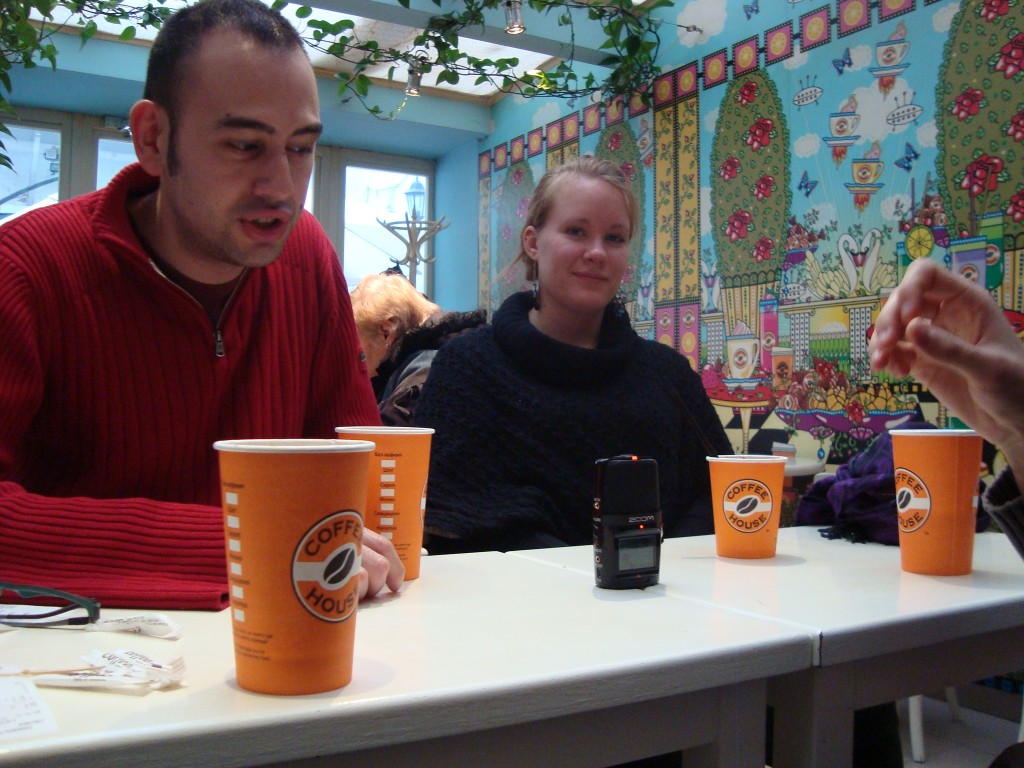 Tricks Of The Mind by Derren Brown
Tricks Of The Mind by Derren Brown
My rating: 4 of 5 stars
In this book, Derren Brown, famous British “illusionist, mentalist, trickster, hypnotist, painter, writer, and sceptic”, sets out to reveal the secrets of his work and actually tell people “I have no real powers, and I hope this settles it!”. We get to see all of the above sides of his: amazing breakdowns of his work and shows and spectacular analyses of what parts of human psychology and neurology he manipulates and why. Most of all, however, we see his sceptical side.
Derren Brown dedicates the majority of his book and prose on an excellent and thorough debunking of things like parapsychology, homeopathy and alternate medicine. He goes through them with an aura of “I would like these things to exist but they cannot, and here’s why”. The idea is that they’re all a mix of delusions, confirmation bias, psychological tricks and many other “flaws” of the human psyche he actually explains are the reason he can trick people.
Now, my personal opinion still is that the scientific method is far from perfect and that a lot of what we see that works in these fields but shouldn’t, based on what we can know and understand about the world, is not necessarily less real than what can be proven; conversely, the scientific dogma is trying to concvince us that if it can’t be proven, it shouldn’t work. However, anecdotal evidence from countless sources (which Mr. Brown rejects based on the fact that they cannot be integrated into a greater theory, but how could they ever be?) tells us a different story.
Repeatabiliy, correlations between cause and effect and the need for evidence are concepts inseparable from the scientific method, but the scientific method is only one way of looking at things. You might say it is the one that works more reliably, but that doesn’t mean that it always works or even that reliability should be our end-all-be-all criterion when creating our world theories. For example, how does reliability and repeatability fit in with the double slit experiment? Or how about the decline effect (excellent article by the New Yorker), which questions the whole idea that once something is proven, it should be able to be repeatedly proven anew? What if it fails to? Is it a problem of the experiment or an incompatibility of the nature of things with the idea that, given the same known and unknown conditions, A should always lead to B? Maybe Douglas Adams had it right all along:
“There is a theory which states that if ever anyone discovers exactly what the Universe is for and why it is here, it will instantly disappear and be replaced by something even more bizarre and inexplicable.
There is another theory which states that this has already happened.”
In short: if Derren Brown is an open-minded sceptic, I choose to be the unorthodox researcher, the explorer of the fringes, the one who looks for the truth that slips between the seams, what gets misunderstood by the scientists of its time, ridiculed, rejected by the dominant paradigm, including the rhetoric of this book of course. “I have the rational intelligence to be a scientist, but it’s not in my personality to fill in cracks in established mental models. I seek anomalies that open cracks.” ~Ran Prieur (there’s more from him coming up)
I believe that the author’s bias towards positivism is a resulf of him, as discussed in the book, being religious at a young age and at some point changing sides completely. Since then he seems to have kept insisting that the paranormal or parapsychology must have the same psychological root as religious belief. This is a bias which can also be seen in the studies he chooses to cite to prove his points, as well as the books he recommends at the end of the book for further reading; most of them are, predictably, reinforcing what he already talked about in the book – more scepticism in line with The God Delusion (which I’m curious to read). Is he making the same mistake of maintaining reverse cognitive and confirmation biases, the very same thing he set out to point out to us that everyone is doing?
All that said, even if I disagree with his scope and can see the limitations of his argument (which could be a cognitive bias of my own, mind you), I did enjoy his argumentation and have to commend his style. He didn’t insult people who fall into the cognitive mistakes he outlines and who believe in these irrational behaviours he has taken advantage of to become who he is now; he didn’t try to hold the scepticist view just to prove a point or win the argument, as too many people to count are used to doing, themselves becoming the very zealots they swore to destroy; he was gentle and careful with his explanations and approached the topics with an genuinely, not just a supposedly, open mind; his whole style gave off the impression that he is actually interested in the truth, that he has the real spirit of a researcher and isn’t just the pretention of one. If we disagree in scope and -naturally- look at things from different perspectives… So be it. All I know is that I gained something from his healthy scepticism and his book is now serving as a platform for further investigation of mine in all directions.
An excellent example: from the books section of Ran Prieur’s website:
Charles Fort was the first paranormal investigator, and he’s my favorite natural philosopher. He spent 27 years in libraries collecting notices of physical phenomena unexplainable by science, and put them together into four books in the 1920’s. You don’t have to be into weird stuff to appreciate his style of thinking: that all our attempts to make sense of the world only seem true by excluding stuff at the edges that doesn’t fit, and we can keep updating and revolutionizing our models to fit new observations, but there is no end to this process. This should not make us feel troubled, but awe-struck and amused. The Book of the Damned is Fort’s first and best book, and his one-volume Complete Books are still in print. Here’s another source of Fort online.
[…]
I’ve been into paranormal and new age writing for most of my life. My advice is not to exclude it completely or your mind will become cramped and inflexible. It’s safe to dip your toes into it, but if you go into it deeply, you have to commit to going all the way through. Because you’ll reach a point where your mind cracks open and you’ll think you suddenly Know the Truth, and you’ll be tempted to stop and set up camp. You must not stop, but keep looking at different perspectives. Then you’ll think, wait, now this is the Truth, and now this… Hold on here! It’s looking like reality itself is so packed and multifaceted that it’s easy to make any nutty system of thought seem like the Truth — including the dominant paradigm itself. Now you’re getting it!
The smartest and most thorough book on the “paranormal” is The Trickster and the Paranormal by George P. Hansen. Even though his writing style is aggressively clear, it’s still hard to read because the ideas are so difficult. He covers anthropology, literary theory, shamanism, stage magic, UFO hoaxes, psychic research, and more, and the general idea is that it’s the very nature of these phenomena to only exist on the fringes. How can this work? The answer is simple but sounds so crazy that even Hansen only hints at it. Another big idea is that real unexplained phenomena and hoaxes are not opposites, but blend together.
I love the books of Fortean paranormal researcher John Keel. They’re all great, but my two favories are The Mothman Prophecies and The Complete Guide to Mysterious Beings. Like Keel, I think UFO’s are an occult phenomenon (which means something very hard to explain), and an even smarter author who thinks like this is Jacques Vallee, whose most important book is Passport to Magonia.
A great source for all kinds of fringe books is Adventures Unlimited.
Some books that try to merge woo-woo stuff with hard science: The Holographic Universe by Michael Talbot, The Field by Lynne McTaggart, and The Self-Aware Universe by Amit Goswami. And for a critique of the untested assumptions that underlie science as we know it, check out The End of Materialism by Charles Tart or The Science Delusion by Rupert Sheldrake.
[…]
So when Wilhelm Reich developed physical tools to work with the esoteric energy he called “orgone”, or when Royal Rife cured serious diseases with precise frequency generators, or when Louis Kervran found biological creatures transmuting chemical elements (his book is Biological Transmutations), or for that matter, when ordinary people experience UFO abductions or miraculous healings, these are not hoaxes or delusions. They are honest and accurate observations that fail to be integrated into consensus reality… so far!
*deep breath* Okay. I’ve written this much already and I haven’t even mentioned any of the more practical things covered. Mr. Brown included tricks for improving one’s memory and memorising things (like the incredible Method of Loci), techniques for spotting lies and deception, and others shared with the foundation of NLP for disconnecting with bad memories and reinforcing positive visualisations. You can even find the fundamentals of hypnosis in there, but it’s a topic which, to be honest, he muddled through, unable to tell us precisely or convincingly what it is but very keen on telling us what it isn’t. Now all I’m left with is “what’s hypnosis finally?”
Yes. This review is too long. If you skipped to the end, let me tell you that this book is worth it. It will make you think and it will make you look into real techniques that are both impressive and useful, if only you can just sit down and practice them (which it’s doubtful I will, not because of lack of interest but because of lack of dedication – for now).
To think I haven’t even watched his shows…
View all my reviews








